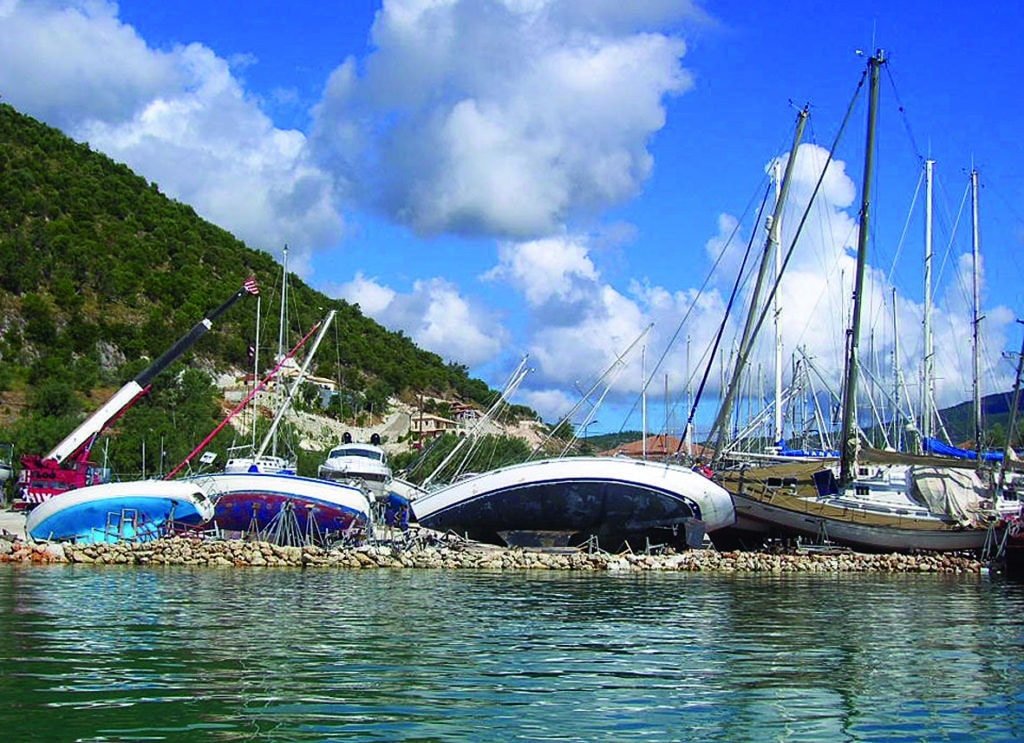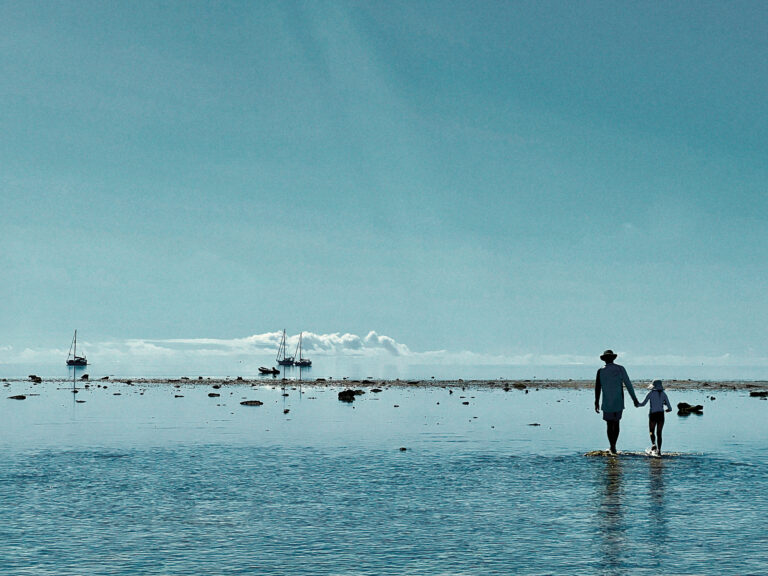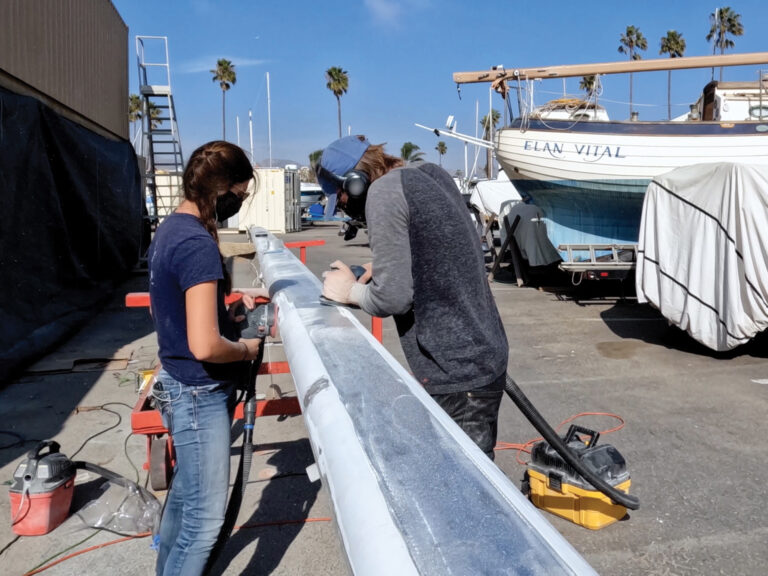
It was late September in western Greece. Our 40-foot sailboat, Shindig, was anchored near Vonitsa, an attractive little working town nestling on the southern coast of the Gulf of Amvrakia. The usually predictable Aeolian weather had been fretful for several days. Fronts were passing through. Thunderstorms browsed the area, rumbling and sparking discontentedly. Winter was knocking at the door.
In the late afternoon, the sea breeze normally quiets and boats converge on their chosen haven for the night. Our precise location was about a mile to the east of Vonitsa. It’s a wonderful anchorage. We had been coming here for years. The anchorage filled with mostly cruising boats but also a few charterers. There was plenty of space, and the incoming skippers chose their spots sensibly. Then came some darkening of the sky, though it was too early for dusk. I was in the cockpit, while my wife, Chele, was below. It looked like there would be rain, so I closed a few hatches. Apart from the gloom, there were no other sinister premonitions. Nothing we hadn’t seen before.
We were wrong. When the wind came, it grabbed our immediate attention. We were on deck the instant the squall struck. Two of the charter boats dragged, and there were near-misses as they passed through the assembled fleet, their crews goggle-eyed and agitated. But it was soon over, lasting 20 minutes at most.
We learned the next day that they had not been so lucky in Vliho Bay, 16 miles to the south. It’s a teardrop-shaped inlet just over a mile long north to south. At the northern end is a narrow entrance, flanked by a couple of boatyards. The bay is surrounded by steep hills, sloping almost to the water’s edge. It usually offers good shelter, yet in a matter of minutes, more than 30 boats laid up ashore were bowled over, while those afloat almost all dragged or broke free from their moorings. A cruising catamaran capsized at anchor, trapping an unfortunate woman inside. Thankfully and remarkably, she was in an air pocket and was rescued by the proprietor of the Vliho Yacht Club, who dived underneath to pull her out. Tragically, a French sailor fell from his boat and drowned.
It was widely reported that it had been a tornado, but experts disagreed. The evidence pointed strongly toward a microburst. Unlike spinning tornadoes, microbursts take the form of vertically plummeting columns of air within the cores of thunderstorms, which burst outward when they can descend no further. Wind speeds may top 100 knots, but they are quite short-lived — typically just a few minutes at their peak.
The photo shows how one boatyard fared. Hardly a boat was left standing, while just a few hundred yards away another boatyard escaped almost unscathed. Back in Vliho ourselves just a few days later, we met an American couple who were about to sail their sturdy Westsail to Corfu for repairs. They had been laid flat by the wind and held there for some minutes while water poured in through ports and hatches. There was little structural damage, but their electrical system and instruments had been destroyed.
Yes, a bad day in Vliho Bay, but one that serves a warning: There’s more than heavy rain that can descend from within those brooding clouds.








